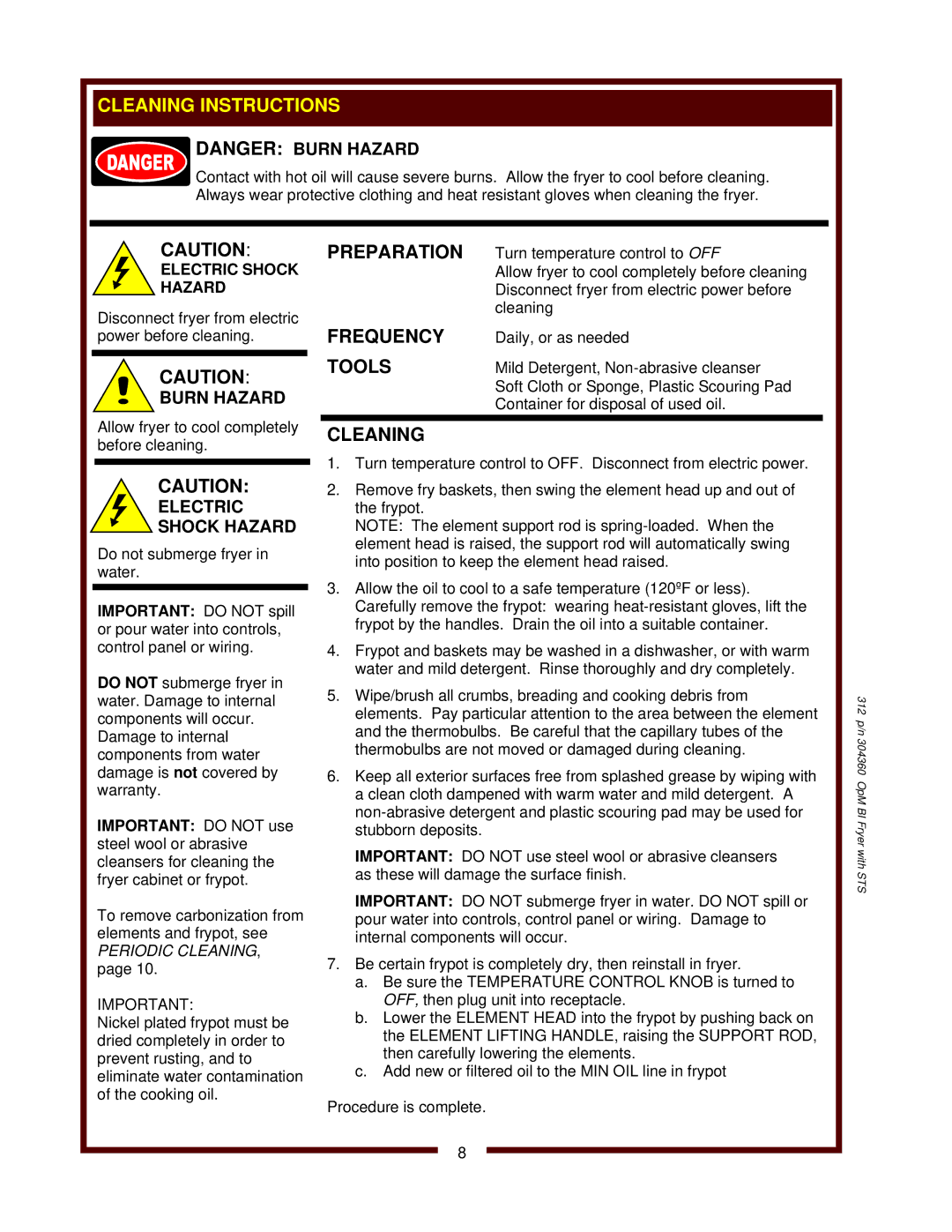F-1016, F-556 STS specifications
Wells F-556 STS and F-1016 are advanced commercial-grade fryers designed to meet the demands of high-volume food establishments. These fryers are celebrated in the culinary world for their exceptional performance, efficiency, and versatility. They stand out in terms of technology and design, ensuring consistency and quality in fried food preparation.The Wells F-556 STS boasts a dual-fry system that allows for frying two separate food products simultaneously while maintaining optimal temperature settings. This feature not only maximizes productivity but also minimizes the cross-contamination of flavors. The fryer is equipped with a maximum oil capacity, which promotes longer frying cycles and reduces the frequency of oil changes, thereby conserving resources and cutting operational costs.
One of the standout characteristics of the F-556 STS is its user-friendly digital control panel. This panel enables precise temperature control, ensuring that each dish is cooked to perfection. Additionally, the fryer includes programmable timers, which streamline the frying process and allow chefs to focus on other kitchen tasks without sacrificing food quality. Its stainless-steel construction provides durability and a sleek appearance, suitable for any professional kitchen environment.
On the other hand, the Wells F-1016 is designed for those looking for a compact yet powerful frying solution. Although smaller in size, the F-1016 does not compromise on performance. This fryer features a single tank with a high output capacity, perfect for limited kitchen space while still delivering exceptional frying results. The F-1016 is equipped with a high-efficiency heating element that ensures quick recovery times, allowing for faster cooking cycles and increased throughput.
Both fryers integrate advanced safety features, including an automatic shut-off system and a built-in filtration mechanism. The filtration system helps extend oil life by removing food particles and contaminants, which ultimately leads to improved food quality and cost savings. Moreover, their energy-efficient designs help reduce power consumption, aligning with modern sustainability efforts.
In summary, Wells F-556 STS and F-1016 fryers are exemplary pieces of equipment for any commercial kitchen. With their innovative technology, robust features, and focus on efficiency, they cater to the diverse needs of chefs, ensuring that they can consistently deliver high-quality fried foods to their customers. These fryers not only enhance operational performance but also contribute to a more sustainable food preparation process.

